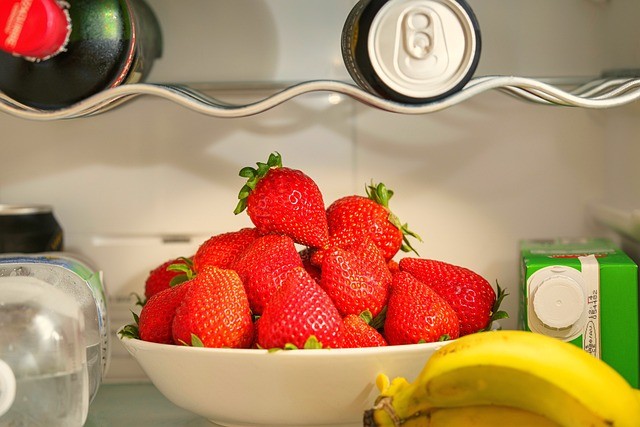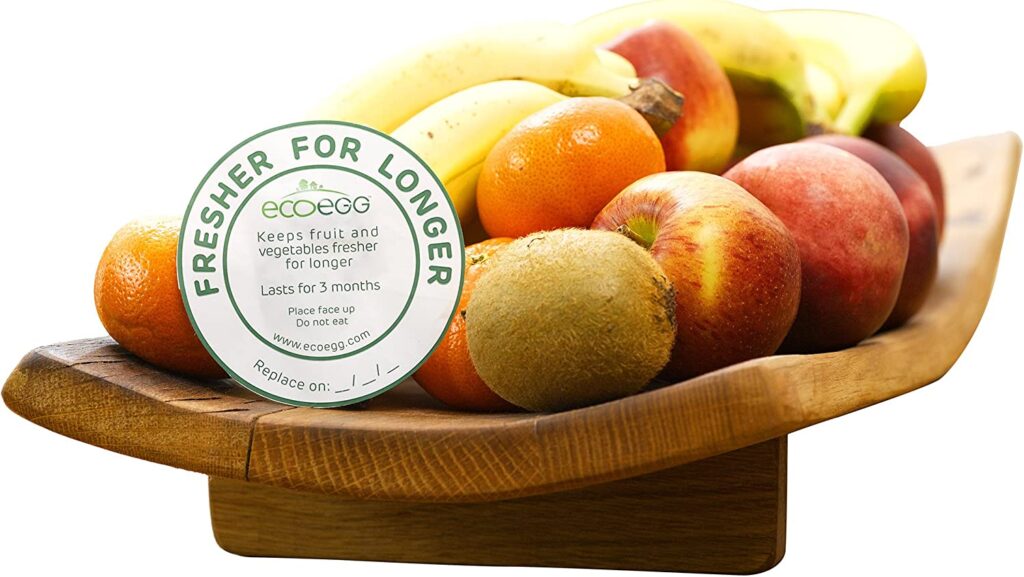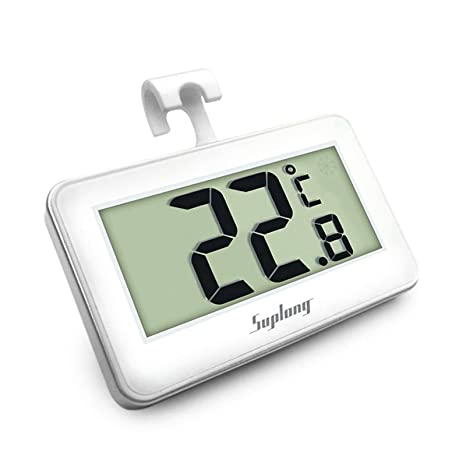We’ve all done it. We purchase fruit and vegetables and stick them in the fridge or fruit bowl, only to find items wilted, shrivelled or rotten when we come to consume it. This article will give you a few tried and tested hints and tips on how to keep fruits and vegetables fresh for longer. Not only will this reduce your supermarket trips, but help you to save some money in the process.

Good Shopping Habits
The first and most obvious thing when it comes to keeping produce fresh is to purchase as freshly as you can. Ideally, you can grow your own or purchase from a local farmers market. If you buy from a supermarket, one of the best and simplest ways to help fruit and veg stay fresh is to buy produce that is in season now. These are usually fruits and vegetables that haven’t had to go through a curing and storage process before getting to the supermarket shelves. Not only will this be as fresh as possible, but it gives better nutrient levels and tastes so much better too.
Secondly, only purchase what you will use and keep a track on what you have sitting in your fridge drawer. We have all been guilty of buying produce and then forgetting it until its too late. Many people keep on top of produce with a magnetic wipe board stuck to the outside of their fridge, noting purchase dates and stopping food waste at a single glance.
Store Compatible Produce Together
As they ripen, some fruits and vegetables produce a harmless, odourless gas called ethylene. This can cause other fruits and vegetables to over-ripen or ripen faster. The trick is to keep the ethylene producing produce away from the ethylene sensitive ones.
The ethylene producing foods are usually ones that ripen after being picked, like Apples, Apricots, Avocados, Bananas, Blackberries, Kiwi fruit, Mangoes, Plums, Peaches, Pears and Tomatoes. Apples, Bananas, Apricots and Pears are the biggest producers, and cause the most damage.
Ethylene sensitive produce are Asparagus, Bananas (unripe), Broccoli, Cabbage, Carrots, Cauliflower, Cucumber, Kale, Lettuce, Peas, Peppers and Watermelon.
The best way to stop this process happening is to keep the two types of produce apart or with the use of a ethylene absorbing product, such as the EcoEgg Fresher for Longer discs. These discs last up to three months, and ideally use inside a fridge draw or fruit bowl.
Check Your Fridge Temperature
Keeping your fridge at the correct temperature is another way to help keep that produce fresh for longer. Make sure you have the correct and accurate temperature with a simple separate thermometer, rather than relying on the fridge dial setting or possibly inaccurate built in thermometer display.
The ideal fridge temperature should be between 3-5 degrees centigrade (37-40 degrees fahrenheit) and measured at different locations in the fridge. This could make a massive difference, not only your fruit and vegetables, but to all the other produce sharing the space.
Aregular fridge clean, especially of the drawers, can stop the build of of harmful bacteria and reduces the risk of cross contamination to you fresh foods.
Tips to keep your Fruit Fresh for Longer
Apples – Apples are ethylene gas producers, so keep them away from other produce (or use an ethylene absorber). Store on a counter for a week, or even longer in a fridge, remembering the issues with storage with other produce. Storing apples with potatoes can reduce the potato’s tendency to produce sprouts, as potatoes are one vegetable that thrive with the apple’s ethylene production.
Avocados – Ripen on a counter and only transfer to a fridge once ripened. Save a half cut avocado from browning for a day or so by squirting a little lemon or lime juice on top. This can halt the unappetising oxygenation that can occur once it’s left open to the elements.
Bananas – Avoid putting green bananas in the fridge. Store, ideally, on a banana hanger. They shouldn’t really be chilled at any time, though a counter top will be fine. Separating and wrapping each banana stem in eco-friendly plastic wrap can slow the ripening effects from the ethylene gas too. If you have bananas that have already become ripe, but still in good condition, remove the peel, half them, place into an airtight bag for the freezer. These can be great for smoothies and can last 2-3 months.
Berries – Keep blackberries, blueberries, strawberries and raspberries in the fridge in a dry, covered container and avoid washing until they are ready to eat. Another option with berries is to wash with a 3:1 ratio of vinegar to water, before rinsing and drying. You can then keep them in the fridge. This can reduce mould building up and extend their life by days.
Grapes – Keep grapes in the fridge in their packaging, and avoid washing until they are ready to eat.
Citrus Fruit – Keep lemon, limes and oranges in the fridge for a longer shelf life. This can be in the crisper draw or a mesh bag. If you need a little lemon or lime juice for a recipe, try piercing the fruit rather than cutting it. This stops the entire fruit from drying out too quickly. Half a lemon or lime can keep longer by wrapping tightly in tinfoil, saving you from disposal of the unused half.
Melons – Don’t store cantaloupe and honeydew melons in the fridge loose, even before cutting. Keep in a cool dry place away from other produce, only transferred to the fridge once cut. Refrigerating watermelons reduces the amount of compounds like beta-carotene and other anti-oxidants. For the best health benefits, keep them at room temperatures until cut.
Stone Fruits – Store nectarines, peaches and plums in a paper bag on the counter top until ripe, before moving to the fridge to extend their shelf life.
Tomatoes – Store tomatoes at room temperature, as the fridge can cause them to rot quicker. Store loose in a bowl, away from the sun or other heat sources like a stove. Another tip is to store tomatoes stem side down, as this is the last place they tend to ripen.
Tips to keep your Vegetables Fresh for Longer
Asparagus – Asparagus tends to dry out easily. Just as you would with cut flowers, place the cut edges upright submerged in a cup or bowl or water in the fridge with a plastic bag over the top to help preserve them. You can also wrap in a damp paper towel.
Aubergine – Store at room temperature. They can be refrigerated for 1-3 days if you plan to eat them soon.
Broccoli and Cauliflower – Both are best kept in a separate fridge draw away from other produce. Broccoli can be preserved for longer if you wrap in a damp paper towel.
Celery – Store in the fridge. Wrapping celery in foil, rather than the plastic bag it comes in, allows ethylene gas to escape, reducing spoiling happening too fast.
Cucumber – Like aubergine, store cucumbers at room temperature. They can be refrigerated for 1-3 days if they are consumed soon after the removal from the fridge. The common mistake of keeping them in fridges cause cucumbers to become more watery.
Green Beans – Store in the fridge.
Leafy Green Vegetables – Store leafy green vegetables like lettuce, chard, kale and spinach in the fridge. Leftover lettuce can be placed in a bowl, with a paper towel on top, covered in an airtight wrap. The paper will absorb moisture and stop the leaves becoming soggy and brown. Whole lettuce should be stored in a perforated bag or a paper bag to reduce its tendency to go slimy.
Onions and Garlic – Store garlic and onions in a cool, dark, dry space. Keep them away from other produce due to their strong smells. Onions need air circulation to stay fresh. Avoid keeping them close to potatoes as this can cause potatoes to spoil quicker. Intact garlic bulbs can last up to two months. Separating them into cloves can reduce this time to 3-10 days.
Mushrooms – Keep unwashed in the fridge. Only wash before use as the moisture can make them slimy. Keep them unwashed in a paper bag with parsley, this can reduce the appearance of spots.
Peppers – Like aubergines and cucumber, store peppers at room temperature. If you plan to eat them soon, they can be refrigerated for 1-3 days. Low temperatures make peppers lose their crunch.
Potatoes – Store potatoes, sweet potatoes and winter squashes in a cool, dry, dark place like a pantry or cellar. Sunlight causes chlorophyll to accumulate, turning potatoes green and sometimes bitter. Refrigerated potatoes also convert starches to sugar, causing a gritty texture too. Storing apples with potatoes can reduce the potatoes tendency to produce sprouts. This is because they are one vegetable that thrives with the apple’s ethylene production.
Other Root Vegetables – Store root vegetables like carrots, parsnips, beets and radishes in the fridge. If you purchased whole carrots with leaves, chopping them off. This will stop the leaves pulling nutrients out of the roots, keeping them juicy for longer. Keep carrots in a completely enclosed container that doesn’t expose them to the air. This reduced the chances of mould forming. Hold off on peeling carrots until you need them, as peeled carrots spoil faster.


